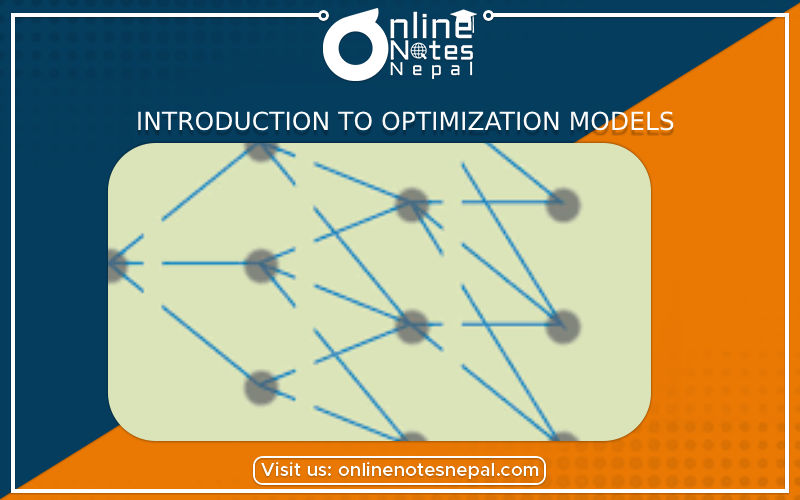Published by: Anu Poudeli
Published date: 04 Jul 2023

Basics of Optimization Models
Optimization models are mathematical depictions of real-world issues involving selecting the optimal answer from a range of workable options. To make better judgments and increase efficiency, these models are frequently utilized in a variety of disciplines including operations research, engineering, economics, finance, and logistics.
Three fundamental elements make up an optimization model: choice variables, the objective function, and restrictions.
1.Decision Variables: In an issue, we can pick or control certain quantities or actions, which are represented by decision variables. They are the model's unknowns, which we want to optimize. Choosing from a limited number of possibilities is an example of a discrete decision variable. Choosing from a range of possible values is an example of a continuous decision variable. Decision variables could, for instance, represent the various product amounts to be produced in a production planning problem.
2.Objective Function : The objective function specifies the performance metric or the aim that we wish to optimize in the challenge. It reflects the desired outcome and quantifies trade-offs between various variables. To maximize or diminish a particular amount can be the goal. Common goals include boosting revenue, reducing expenses, and maximizing efficiency, or cutting back on time. The choice variables serve as the basis for a mathematical formula that represents the goal function.
3.Constraints: In an optimization problem, constraints are requirements or restrictions that must be met. They specify the range of potential outcomes or the area in which the input parameters for making decisions must fall. Either equality constraints, where a certain condition must be satisfied precisely, or inequality constraints, where a particular condition must be satisfied, but not necessarily precisely, are constraints. Resource restrictions, capacity restrictions, demand specifications, or logical requirements are a few examples of constraints. These constraints are employed to simulate the constraints of the real world and direct the optimization procedure.
Depending on the complexity and nature of the problem, several mathematical techniques and algorithms are used to solve optimization models. These methods include, among others, stochastic programming, dynamic programming, integer programming, nonlinear programming, and linear programming. The purpose is to identify the choice variables' ideal values that meet the restrictions and improve the objective function.
By methodically examining many possibilities, weighing trade-offs, and determining the optimum course of action, optimization models offer a strong foundation for decision-making. They make it possible for businesses to improve many different facets of their operations, including resource allocation, production planning, supply chain management, scheduling, portfolio optimization, and many more.
In conclusion, optimization models are mathematical depictions of real-world issues that seek to identify the ideal resolution from a range of workable options. Optimization models offer a structured approach to decision-making and help organizations increase productivity and make wise decisions by specifying decision variables, an objective function, and limitations.
In conclusion, optimization models are mathematical depictions of real-world issues that seek to identify the ideal resolution from a range of workable options. Optimization models offer a structured approach to decision-making and help organizations increase productivity and make wise decisions by specifying decision variables, an objective function, and limitations.
In conclusion, optimization models are mathematical depictions of real-world issues that seek to identify the ideal resolution from a range of workable options. Optimization models offer a structured approach to decision-making and help organizations increase productivity and make wise decisions by specifying decision variables, an objective function, and limitations.
In conclusion, optimization models are mathematical depictions of real-world issues that seek to identify the ideal resolution from a range of workable options. Optimization models offer a structured approach to decision-making and help organizations increase productivity and make wise decisions by specifying decision variables, an objective function, and limitations.
In conclusion, optimization models are mathematical depictions of real-world issues that seek to identify the ideal resolution from a range of workable options. Optimization models offer a structured approach to decision-making and help organizations increase productivity and make wise decisions by specifying decision variables, an objective function, and limitations.